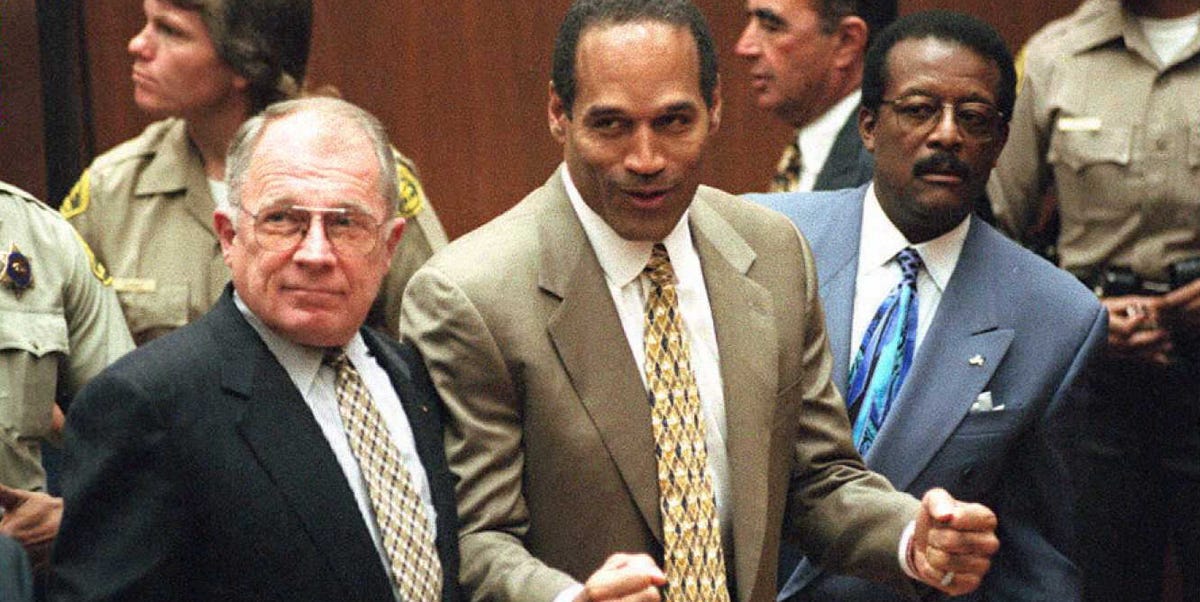The year was 1994, and the world watched as a seemingly idyllic life crumbled into tragedy. Nicole Brown Simpson, ex-wife of famed football star O.j. Simpson, and her friend Ron Goldman were found brutally murdered outside her condominium in Los Angeles. The case quickly captivated the nation, thrusting the spotlight onto a story filled with glamour, violence, and racial tensions.
The subsequent O.j. Simpson timeline became a defining moment in American history, as the trial unfolded like a Dramatic Television Series. It pitted two powerful narratives against Each Other: the prosecution’s case built on physical evidence linking Simpson to the crime scene, and the defense’s compelling argument of police misconduct and conspiracy. The media frenzy surrounding the trial was unprecedented, with every twist and turn dissected by commentators and analyzed by millions Glued To Their Television Screens.
This event transcended a simple murder investigation; it became a cultural touchstone, Raising Complex Questions About Race, justice, celebrity, and the power of the media.
The Crime And Initial Investigation
On a warm June evening in 1994, the lives of Nicole Brown Simpson and Ron Goldman were tragically cut short. Their bodies were discovered outside her Brentwood condominium, victims of a brutal stabbing. The scene was gruesome, leaving investigators with a chilling puzzle To Solve. Initial reports suggested a possible domestic dispute, given Simpson’s history of violence against his ex-wife.
The Los Angeles Police Department launched a full-Scale Investigation, meticulously combing through the crime scene for clues. They found bloody gloves near the victims and traces of blood leading away from the scene. These pieces of evidence pointed towards a struggle, but the lack of a clear motive and the absence of a Suspect Initially Hampered Their Progress. The pressure mounted as public scrutiny intensified, fueled by the media’s insatiable appetite for details about this high-Profile Case.
 Iron Claw: True Story of the Von Erich Family Dynasty
Iron Claw: True Story of the Von Erich Family DynastyAs detectives pieced together the events leading up to the murders, they uncovered a complex web of relationships and potential motives. The O.j. Simpson timeline became a focal point, with investigators scrutinizing his whereabouts on the night of the murders. The stakes were undeniably high; this wasn’t just a murder investigation; it was a race against time to uncover the truth and bring justice for the victims.
Prosecution’s Case: Evidence and DNA
The prosecution’s case against O.j. Simpson rested heavily on physical evidence and scientific analysis. They presented a compelling narrative, meticulously linking Simpson to the crime scene through a series of seemingly Incriminating Pieces. Bloody gloves found at both the murder scene and Simpson’s estate became central to their argument, suggesting a direct connection between him and the victims.
Perhaps the most impactful piece of evidence was DNA analysis. The prosecution argued that DNA samples found on the bloody gloves matched Simpson’S Profile, creating a strong link between him and the crime. This groundbreaking technology, still relatively new at the time, held immense weight in the courtroom, adding a layer of scientific certainty To Their Claims.
The prosecution painted a picture of a meticulously planned attack, highlighting inconsistencies in Simpson’s alibi and pointing towards his history of domestic violence against Nicole Brown Simpson. Their case aimed to convince the jury that the evidence was irrefutable, leaving little room for doubt about Simpson’S Guilt.
Defense Strategy: Police Misconduct and Conspiracy
Facing a seemingly airtight case presented by the prosecution, the defense team led by Johnnie Cochran devised a bold and controversial strategy: to cast doubt on the integrity of the investigation itself. They argued that The Los Angeles Police Department had mishandled key evidence, planting it at the crime scene to frame Simpson. This claim, though initially met with skepticism, resonated with many who saw racial bias within the Lapd as a Potential Motive.
The defense team pointed to numerous instances they believed demonstrated police misconduct, highlighting alleged contamination of evidence and inconsistencies in witness testimonies. They skillfully used these perceived flaws to cast suspicion on the prosecution’s narrative, suggesting that Simpson was the victim of a carefully orchestrated conspiracy.
By shifting the focus from Simpson’s guilt to the questionable actions of the police, the defense aimed to create reasonable doubt in the minds of the jury. Their strategy relied heavily on appealing to public anxieties surrounding racial injustice and police brutality, making the trial far more than just a legal battle; it became a deeply symbolic clash Between Competing Narratives About Power, race, and justice within American society.
The Verdict and Public Reaction
After months of intense scrutiny and Emotional Testimony, the jury delivered its verdict on October 3, 1995: not guilty on all charges. The courtroom erupted in shock and disbelief, while millions watching at home grappled with the unexpected outcome. The acquittal sent shockwaves through the nation, igniting a firestorm of debate about race, justice, and the power of celebrity.
Many African Americans celebrated the verdict as a victory against systemic racism within the criminal justice system, viewing it as proof that Simpson was indeed innocent. Conversely, Many Others, Particularly Victims’ rights advocates and those who believed in the prosecution’s case, expressed outrage and disappointment, feeling that justice had not been served. The media frenzy surrounding the trial Reached Fever Pitch, with pundits and commentators dissecting every aspect of the verdict and its implications for society.
The O.j. Simpson timeline became a defining moment in American history, leaving an enduring legacy that continues to be debated and analyzed today. It exposed deep societal divisions and Raised Fundamental Questions About Truth, perception, and the role of race in shaping our understanding of justice.
Legacy of the O.J. Simpson Trial
The O.j. Simpson trial transcended its initial scope as a criminal case, leaving an indelible mark on American culture and society. It exposed deep-seated racial tensions within the country, sparking national conversations about police brutality, Systemic Racism, and the media’s role in shaping public opinion. The trial became a touchstone for Discussions About Justice, truth, and the complexities of navigating a legal system often perceived as biased.
The legacy of the O.j. Simpson Trial Continues To Resonate Today. It serves as a reminder of the power of narratives and the influence they can have on shaping our understanding of events. It also highlights the importance of Critical Thinking, Media Literacy, and engaging in open and honest Conversations About Race, justice, and the complexities of human nature.
The case remains a subject of fascination and debate, prompting ongoing reflection on its impact on American society and its enduring relevance in contemporary discussions about law, race, and social justice.










